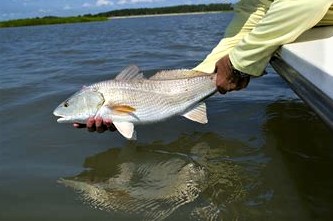
It’s part of the code of responsible “catch and release” angler: treat fish as gently as possible. This type of angler will fish using a barbless hook, a special net, and more peaceful techniques in the pursuit of the intended target. The aim is to cast to, catch, many times photograph, then release the quarry doing a minimum of harm. In other words, this angler takes a picture for the wall, not a trophy to hang on it. Below are some simple guidelines for proper catch and release fishing practices to release your fish relatively stress free.
- De-barb your hooks or purchase barbless hooks. They are much easier to remove from fish (and you) and inflict less damage.
2. Land the fish as quickly as possible and keep it in the water until you are ready for a measurement and/or photo.
3. Use wet hands when handling a fish or a knotless rubberized landing nets (and rubberized – not cotton- gloves if you must wear gloves). This helps maintain the slime coat on the fish, which protects it from infection and aids in swimming. Never use a towel of any kind when handling fish since a towel can remove this slime coat.
4. Hold the fish horizontally whenever possible since this is the way fish naturally swim through the water. A fish’s internal organs are not designed to be in a prolonged, vertical orientation. Do not squeeze the belly of a fish or drop it onto a hard surface.
5. Keep your fingers away from the gills and eyes of the fish. Think about how pleasant it might be to be picked up by your lungs or eye sockets.
6. If needed, use a release tool (Boca grip, dehookers, recompression tools) to minimize handling.
7. Release fish as soon as practical and do not keep them out of the water longer than necessary. Try to release your fish gently head first into the water, which helps push water through the mouth and over the gills, and helps to resuscitate the fish. Revive exhausted fish by placing the fish in the water, facing the current if possible, with one hand underneath the belly and the other hand holding the bottom lip or tail and perhaps moving it gently forward and back which helps move fresh water through the gills, speeding the rejuvenation process.
Follow these easy steps and you will help in building and conserving our fishery for future generations of anglers.